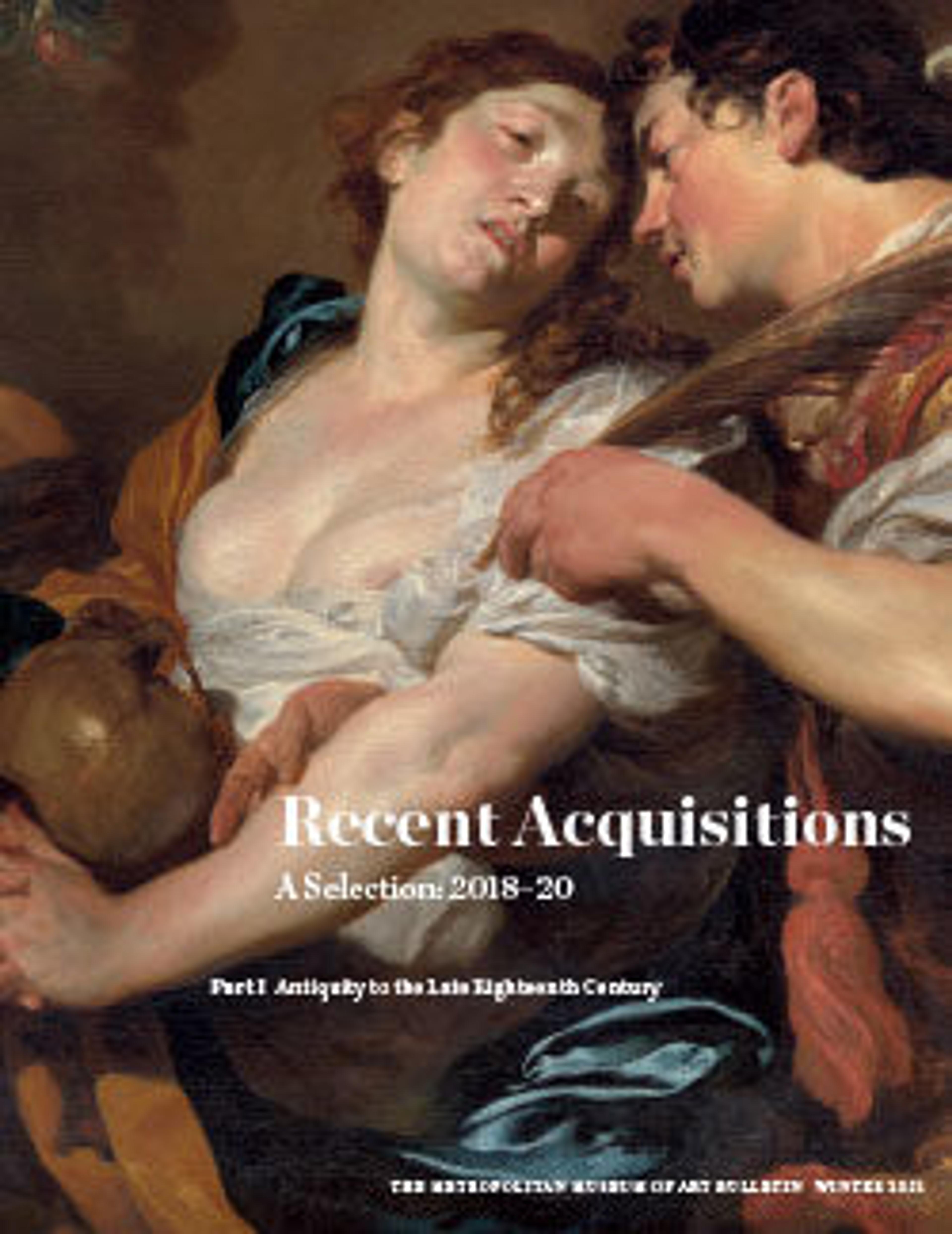Profile Portrait of a Woman
Although he did not formally study with Charles-Nicolas Cochin the younger (1715-1790), Augustin de Saint-Aubin made many etchings after his portrait drawings, and it is Cochin, more than Augustin’s brother Gabriel, who should be considered his primary artistic mentor. Indeed, Cochin’s medallion format profile portraits, inspired by antique examples, would have a strong influence on French conceptions of portraiture throughout the second half of the eighteenth century. This debt notwithstanding, a difference of aesthetic temperament distinguished the portrait drawings of Cochin and Augustin de Saint-Aubin. If Cochin’s portraits are characterized by a simplicity of approach and a monochrome palette, Saint-Aubin favored a somewhat less severe, more decorative technique, often adding diaphanous touches of color. In the Salon livrets, this use of media, described as "graphite mixed with a little pastel" was often specified in connection to Saint-Aubin’s portraits even when the identity of the sitter was not.
The result, as embodied in the Wrightsman portrait, achieves an equilibrium between the Rococo sensibility and the fashionable taste for the antique, a combination very much to the taste of Augustin’s contemporaries. Touches of red chalk add bloom to the complexion and the lips and draw attention to the spray of roses at the sitter’s neckline. A transparent blue wash is employed for the dress and the flower’s leaves. The use of the oval, rather than round, format expands the focus from simple facial physiognomy. Indeed, from traces of the preliminary sketch visible in the margin, one can see that Saint-Aubin first made a rough half-length study of the figure, before establishing the oval border and bringing its interior to a high level of finish. The low décolletage and the juxtaposition of the nipple and the rosebud follow a well-established paradigm of feminine beauty.
As the Wrightsman drawing was never engraved and bears no inscription, it has not been possible to identify the sitter. Nonetheless, the clothing and hairstyle offer clues as to the date of the sheet. Hairstyles with the essential combination of frizzed hair on the top and sides of the head with large set curls around the neck made their first appearance in France around 1780, where they were sometimes referred to by the name hérisson, or hedgehog. The frizzed hairstyle remained popular for a number of years, but the dress would not have been worn after 1789, suggesting a date of ca.1780-89 for the drawing, but most likely, assuming the sitter was depicted in the latest fashions, ca.1780-82.
Perrin Stein, adapted from The Wrightsman Pictures, New York, 2015, cat.59, pp.222-23
The result, as embodied in the Wrightsman portrait, achieves an equilibrium between the Rococo sensibility and the fashionable taste for the antique, a combination very much to the taste of Augustin’s contemporaries. Touches of red chalk add bloom to the complexion and the lips and draw attention to the spray of roses at the sitter’s neckline. A transparent blue wash is employed for the dress and the flower’s leaves. The use of the oval, rather than round, format expands the focus from simple facial physiognomy. Indeed, from traces of the preliminary sketch visible in the margin, one can see that Saint-Aubin first made a rough half-length study of the figure, before establishing the oval border and bringing its interior to a high level of finish. The low décolletage and the juxtaposition of the nipple and the rosebud follow a well-established paradigm of feminine beauty.
As the Wrightsman drawing was never engraved and bears no inscription, it has not been possible to identify the sitter. Nonetheless, the clothing and hairstyle offer clues as to the date of the sheet. Hairstyles with the essential combination of frizzed hair on the top and sides of the head with large set curls around the neck made their first appearance in France around 1780, where they were sometimes referred to by the name hérisson, or hedgehog. The frizzed hairstyle remained popular for a number of years, but the dress would not have been worn after 1789, suggesting a date of ca.1780-89 for the drawing, but most likely, assuming the sitter was depicted in the latest fashions, ca.1780-82.
Perrin Stein, adapted from The Wrightsman Pictures, New York, 2015, cat.59, pp.222-23
Artwork Details
- Title:Profile Portrait of a Woman
- Artist:Augustin de Saint-Aubin (French, Paris 1736–1807 Paris)
- Date:ca. 1780–82
- Medium:Graphite, red and black chalk, with touches of blue wash
- Dimensions:Sheet: 6 in. × 5 1/16 in. (15.3 × 12.8 cm)(oval)
- Classification:Drawings
- Credit Line:Bequest of Mrs. Charles Wrightsman, 2019
- Object Number:2019.138.1
- Curatorial Department: Drawings and Prints
More Artwork
Research Resources
The Met provides unparalleled resources for research and welcomes an international community of students and scholars. The Met's Open Access API is where creators and researchers can connect to the The Met collection. Open Access data and public domain images are available for unrestricted commercial and noncommercial use without permission or fee.
To request images under copyright and other restrictions, please use this Image Request form.
Feedback
We continue to research and examine historical and cultural context for objects in The Met collection. If you have comments or questions about this object record, please contact us using the form below. The Museum looks forward to receiving your comments.
